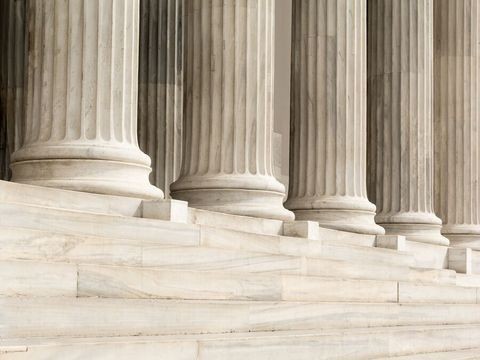New Presidential Order Aims to Help Bridge International Regulatory Discrepancies
Client Alert | 2 min read | 05.03.12
On May 1, President Obama signed an Executive Order (E.O.) aimed at enhancing coordination of international regulatory cooperation activities among U.S. regulatory and policy agencies.
The new E.O. – titled "Promoting International Regulatory Cooperation" – essentially grafts a broad international dimension onto E.O. 13563 (January 18, 2011), which focused on improving the quality of U.S. regulations, imposed new regulatory review requirements, and encouraged international cooperation. The new order appears aimed at the following key objectives:
- Improved coordination among U.S. agencies: The new order asserts additional control by the Office of Information and Regulatory Affairs (OIRA) of the Office of Management and Budget (OMB) over the international regulatory cooperation activities of individual agencies – an apparent response to perceived lack of coordination in the past.
- Greater consideration of regulatory approaches of major U.S. trading partners: The E.O. provides a more direct mandate to U.S. regulators to make international cooperation part of their ongoing work, to consider the international impact of U.S. regulations, and, where possible, to consider adapting to the regulatory approaches of major trading partners in order to reduce unnecessary discrepancies in approach.
- Maintaining U.S. competitiveness: The new order responds to growing business community sentiment that reducing discrepancies in regulatory approaches among major U.S. trading partners (e.g., EU, Mexico, Canada) is a critical element in maintaining U.S. competitiveness in a globalized economy, and building a stronger basis for future regulatory cooperation with China.
Experience has demonstrated that international regulatory cooperation is a difficult, painstaking process of fits and starts. Many national-level regulators bristle at the notion that considering the trade-related implications of their work is a legitimate focus. Trade negotiators bristle equally against the idea of regulators touching their turf. With import tariffs low in many economic sectors, non-tariff regulatory barriers represent a key vehicle of trade protectionism; reducing those barriers through cross-border cooperation and convergence will take a lot more than an Executive Order. Ultimately, a more comprehensive and legally binding reciprocal negotiating framework will be necessary to overcome those obstacles.
Nonetheless, this is a start and the Administration's effort to emphasize the importance of international regulatory cooperation presents opportunities for companies to engage with U.S. regulators, trade policy officials, and OIRA to draw attention to unnecessary, costly regulatory discrepancies, and to encourage both regulator-to-regulator and policy-level engagement to discuss, if not to reduce, those gaps. Existing high-level regulatory cooperation efforts of the U.S. with the EU, Mexico, Canada, and in the Asia Pacific Economic Cooperation (APEC) forum will see their profiles – and perhaps even their effectiveness – enhanced as a result of this White House-driven push. Enhanced coordination and prioritization of international regulatory cooperation should assist companies with cross-border planning and increased operational efficiencies.
Contacts
Insights
Client Alert | 5 min read | 12.12.25
Eleventh Circuit Hears Argument on False Claims Act Qui Tam Constitutionality
On the morning of December 12, 2025, the Eleventh Circuit heard argument in United States ex rel. Zafirov v. Florida Medical Associates, LLC, et al., No. 24-13581 (11th Cir. 2025). This case concerns the constitutionality of the False Claims Act (FCA) qui tam provisions and a groundbreaking September 2024 opinion in which the United States District Court for the Middle District of Florida held that the FCA’s qui tam provisions were unconstitutional under Article II. See United States ex rel. Zafirov v. Fla. Med. Assocs., LLC, 751 F. Supp. 3d 1293 (M.D. Fla. 2024). That decision, penned by District Judge Kathryn Kimball Mizelle, was the first success story for a legal theory that has been gaining steam ever since Justices Thomas, Barrett, and Kavanaugh indicated they would be willing to consider arguments about the constitutionality of the qui tam provisions in U.S. ex rel. Polansky v. Exec. Health Res., 599 U.S. 419 (2023). In her opinion, Judge Mizelle held (1) qui tam relators are officers of the U.S. who must be appointed under the Appointments Clause; and (2) historical practice treating qui tam and similar relators as less than “officers” for constitutional purposes was not enough to save the qui tam provisions from the fundamental Article II infirmity the court identified. That ruling was appealed and, after full briefing, including by the government and a bevy of amici, the litigants stepped up to the plate this morning for oral argument.
Client Alert | 8 min read | 12.11.25
Director Squires Revamps the Workings of the U.S. Patent Office
Client Alert | 8 min read | 12.10.25
Creativity You Can Use: CJEU Clarifies Copyright for Applied Art
Client Alert | 4 min read | 12.10.25
Federal Court Strikes Down Interior Order Suspending Wind Energy Development



